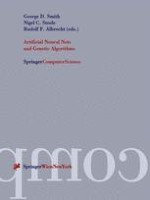1998 | OriginalPaper | Buchkapitel
Comparing a Variety of Evolutionary Algorithm Techniques on a Collection of Rule Induction Tasks
verfasst von : D. Corne
Erschienen in: Artificial Neural Nets and Genetic Algorithms
Verlag: Springer Vienna
Enthalten in: Professional Book Archive
Aktivieren Sie unsere intelligente Suche, um passende Fachinhalte oder Patente zu finden.
Wählen Sie Textabschnitte aus um mit Künstlicher Intelligenz passenden Patente zu finden. powered by
Markieren Sie Textabschnitte, um KI-gestützt weitere passende Inhalte zu finden. powered by
Induction of useful rules from databases has been studied by several researchers. There remains need for systematic comparison of alternative such methods, especially considering the available variety of rule representation strategies, genetic operators, evolutionary algorithm designs, and so forth. Here, the performance of five commonly employed evolutionary algorithms are examined on a collection of 100 separate rule induction tasks on five freely available datasets. All tasks require the generation of rules in disjunctive normal form with either a fixed or free consequent maximising an accuracy/applicability tradeoff measure; tasks differ in terms of the dataset used, the identity of a fixed consequent (or no fixed consequent), and the maximum number of disjuncts allowed in the antecedent. Results generally indicate that single-member based methods (hill climbing, simulated annealing, tabu search) fare at least as well as population based techniques when rules are restricted to fairly low complexity, but this situation is reversed as rules are allowed to be more complex. These results are of import to data mining application developers and researchers wishing to find the appropriate search strategy for rule induction with respect to their particular needs.
